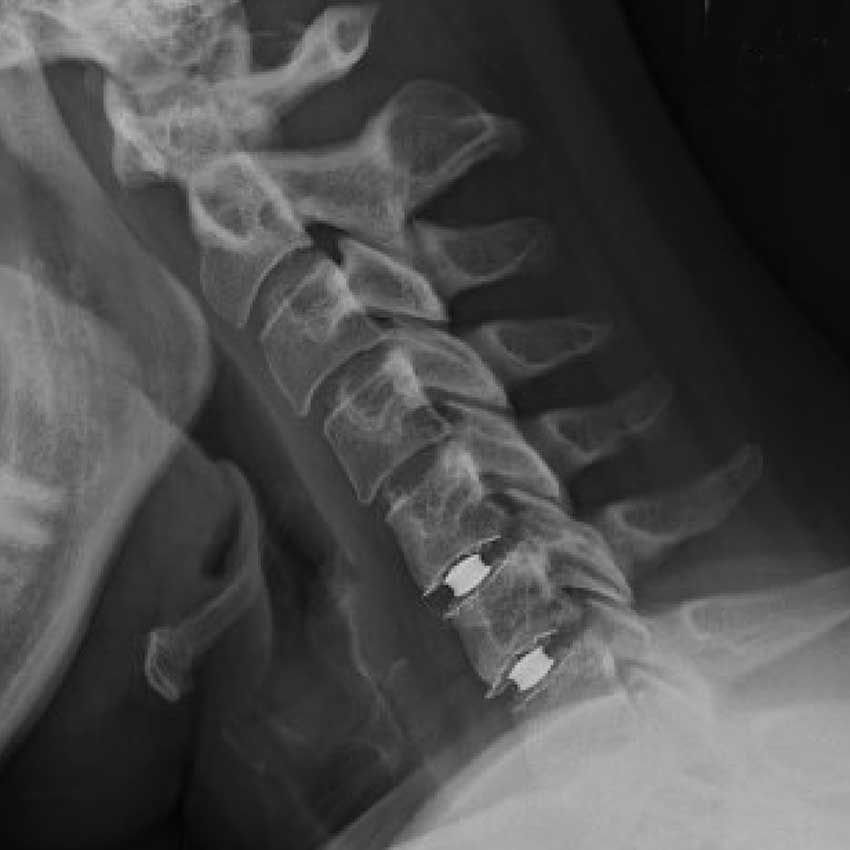Cervical Artificial Discs
Author - Jeffrey A. Goldstein, MD, FACS
What are artificial discs?
As the name suggests, artificial discs resemble normal human discs. Healthy human discs serve as a cushion between the spinal vertebrae, and absorb stress and shock from movement, and protect the vertebrae from grinding against one another. These intervertebral discs degenerate as part of the normal aging process. As they degenerate, the discs may flatten, which can cause nerve impingement, inflammation, and pain. Disc degeneration can also cause pain as the vertebral bones begin to press against one another. This pain is increased by motion, such as bending, twisting and lifting.
Cervical arthroplasty, also known as artificial disc replacement, is a surgical procedure that involves the replacement of a damaged disc in the neck (cervical spine) with an artificial disc. Artificial discs are designed to fit into the damaged disc space in order to restore disc height, improve mobility and flexibility, and eliminate pain. There are several types of artificial discs. The discs are made of surgical grade metal (such as stainless steel or titanium). Some also include a soft, pliable inner material made from polyethylene.
Why are they used?
Degenerative disc disease is a common ailment that affects 40-50% of the over-40 population. Disc degeneration is usually treated with non-operative care, such as bed rest, pain management, and physical therapy. However, when conservative treatments fail, patients with severe degenerative disc disease may need surgery to increase stability and strength, restore height, and reduce pain.
Traditionally, fusion surgery has been the most common procedure for the condition. This type of surgery involves removing the degenerated disc, harvesting small pieces of the patient's own bone (taken from other parts of the body, such as the hip) and using it to fuse together damaged vertebrae into a stable and secure structure. The procedure may also include the use of special spinal instrumentation to help facilitate the fusion.
For many patients, the use of artificial discs may be an attractive alternative to fusion surgery. Instead of removing discs and fusing vertebrae together, the damaged discs will simply be replaced with artificial discs. Cervical arthroplasty offers improved neck mobility and flexibility, potentially quicker recovery, and reduced adjacent segment degeneration. Unlike fusion surgery, it maintains spinal disc height and eliminates the need for bone grafting.
Dr. Goldstein is eminently well-qualified in the use of both traditional and artificial disc techniques as appropriate. He has been deeply engaged on the research that has led to the adoption of both lumbar artificial discs and cervical disc replacement.
Cervical Spine Surgery More Articles
- Simplify Cervical Disc
- Cervical Artificial Discs
- ProDisc-C Cervical
- MOBI-C Cervical
- Recovery After Cervical Disc Replacement
- Disc Replacement vs Fusion
- Cervical Arthroplasty Beginnings
- Cervical Arthroplasty Considerations
- ACDF or ADR

For doctors and medical professionals. Research papers about Cervical Disc Replacement co-authored by Dr. Goldstein.
- Effect of intervertebral disc height on postoperative motion and clinical outcomes after Prodisc-C cervical disc replacement
- Incidence of Potential Candidates for Total Disc Replacement among Lumbar and Cervical Fusion Patient Populations
- ProDisc-C total disc replacement versus anterior discectomy and fusion for the treatment of 1-level symptomatic cervical disc disease
